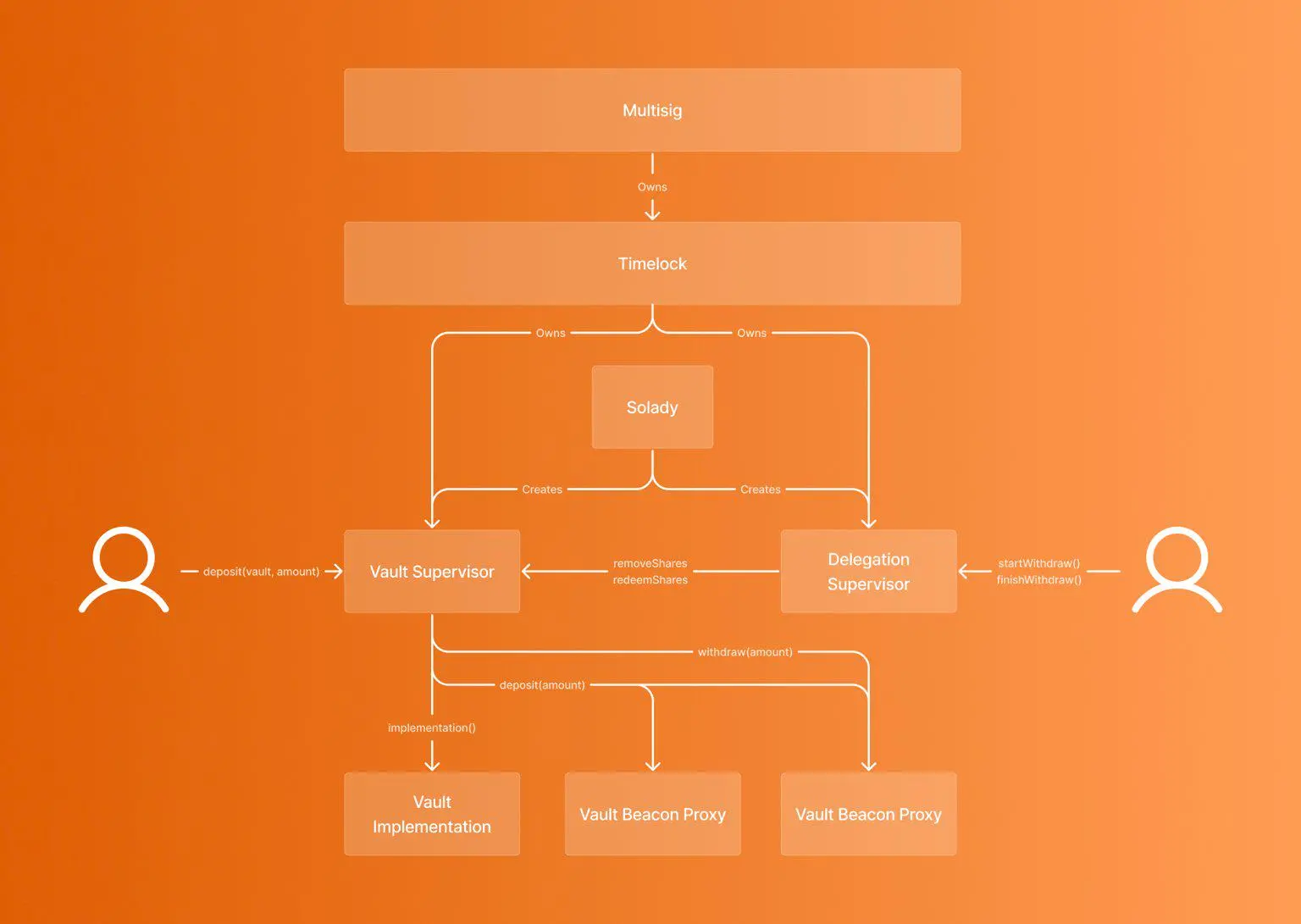A Comparative Analysis of the "Three Giants" in Re-staking: EigenLayer, Symbiotic, and Karak, Signifying a New Era for Ethereum
Author: Weilin, PANews
Recently, Poopman@poopmandefi, an enthusiast in the fields of restaking, AVS, and fully homomorphic encryption (FHE), posted on the X platform to interpret concepts such as restaking and AVS, and provided a visual comparison of three projects: EigenLayer, Symbiotic, and Karak.
PANews compiled the original post, and in this article, we will popularize and discuss what AVS and restaking are, the core architecture of EigenLayer, Symbiotic, and Karak, a comparative analysis of the advantages of these three projects, and finally, the conclusion.
What are AVS and Restaking?
AVS stands for Actively Validated Service. This term essentially describes any network that requires its own validation system (e.g., oracles, data availability DA, bridges, etc.). In this article, AVS can be understood as projects that utilize restaking services.

Conceptually, restaking is a method of "reusing" already staked ETH for additional validation/services, allowing for more rewards without needing to unstake.
Restaking typically comes in two forms:
- Native Restaking
- LST / ERC20 / LP Restaking

Through restaking, restakers and validators can leverage pooled security to safeguard thousands of new services.
This helps reduce costs and increases the security guarantees needed to launch new trust networks. Among them, EigenLayer (EL) is the first project to achieve this.
EigenLayer
Overall, EigenLayer (EL) consists of four main components:
Stakers
Operators
AVS Contracts (e.g., token pools, designated slashing conditions)
Core EigenLayer Contracts (e.g., delegation manager, slashing manager)

These participants work together, allowing stakers to delegate assets on EigenLayer, while validators register as operators.
AVS on EigenLayer can also customize the quorum and slashing conditions of their systems.
EigenLayer supports both native restaking and liquidity restaking. With a total locked value (TVL) of approximately $15 billion:
68% of the assets are native ETH
32% are LST
Currently, EL has about 161,000 restakers, but approximately 67.6% (around $10.3 billion) of the assets are delegated to only 1,500 operators.

AVS on EigenLayer
EL provides high flexibility for AVS, allowing them to design their own:
Staker quorum (e.g., 70% ETH restakers + 30% $AVS stakers)
Slashing conditions
Fee models (can be paid using $AVS, $ETH, etc.)
Operator requirements
And more customization options within their respective AVS contracts…

Roles in EigenLayer
EL controls the following:
Delegation Manager
Policy Manager
Slashing Manager
Validators wishing to become EL operators must register with EL.
The policy manager is responsible for balancing the accounts of restakers and works with the delegation manager to execute related operations.

Regarding slashing, each AVS has its own slashing conditions. If an operator behaves maliciously or violates commitments on EL, they will be slashed by the slasher, each of whom has their own slashing logic.
If an operator chooses to join two AVS, they must agree to the slashing conditions of both AVS.

About the Veto Slashing Committee (VSC). In the case of "wrong slashing," EL has a VSC that can revoke slashing results.
Unlike standard committees, EL allows AVS and stakers to establish their preferred VSC, creating a customized VSC market for different solutions.
In short, EL offers:
Native + LST Restaking
Asset delegation (including ETH assets and $EIGEN)
High flexibility to design their own terms for AVS
Veto Slashing Committee
Active operators (currently about 1.5K)

Symbiotic
Symbiotic positions itself as the "DeFi hub" for restaking by incorporating $ENA and $sUSDe into its staking basket.
Currently, 74.3% of the TVL is wstETH, 5.45% is sUSDe, and the remainder consists of various LST.
There is currently no native restaking, but it may be launched soon.

About Symbiotic ERC20. Unlike EL, Symbiotic mints a corresponding ERC20 token to represent your deposit.
Once collateral is deposited, the assets are sent to a "vault," which are then delegated to the corresponding "operators."

About AVS on Symbiotic. In Symbiotic, AVS contracts/token pools are referred to as "Vaults."
Vaults are contracts set up by AVS, which use Vaults for account balancing, delegation design, and other operations.
AVS can insert external contracts to customize the reward flow for stakers and operators.

As for Symbiotic's vaults, similar to EL, Vaults can be customized, such as multi-operator Vaults.
A significant difference from EL is that the vaults are immutable pre-configured vaults, which deploy with pre-configured rules to "lock" settings and avoid the risks of using upgradeable contracts.
Resolvers are similar to the veto committee in EL, where they can veto slashing in the event of incorrect slashing.
In Symbiotic, a vault can request multiple resolvers to cover collateral or integrate dispute resolution solutions like UMA Protocol.

In short, Symbiotic offers:
Accepts LST + ERC20 + stablecoins as collateral
Mints ERC20 receipt tokens
Currently no native restaking or delegation.
Vaults with their own terms
Multiple resolvers, designed for greater flexibility

Karak
Karak uses a system called DSS, similar to AVS.
Karak accepts a diverse range of collateral, including LST, stablecoins, ERC20, and even LP tokens. Collateral can be deposited across multiple chains, such as ARB, Mantle, BSC, etc.

Collateral:
Among Karak's total locked value of approximately $800 million, most deposits are still LST, with the majority remaining on the ETH chain.
Meanwhile, about 7% of the assets are deposited through the Layer2 network K2 developed by the Karak team and are protected by DSS.

DSS on Karak:
So far, Karak V1 offers the following platforms:
Vaults + Supervisors
Delegated Supervisors
In terms of architecture, Karak provides a turnkey-like SDK and K2 sandbox, simplifying development work.
However, further analysis requires more information.

Comparison of the Three Projects
Visually, collateral is the most obvious distinguishing factor.
Eigenlayer EL offers native ETH restaking and EigenPods, with the ETH it receives accounting for 68% of the total locked value, successfully launching 1,500 operators.
They are also about to accept LST and ERC20 tokens.

Symbiotic, through collaboration with ethena labs, first accepts sUSDe and $ENA, positioning itself as the "DeFi hub."
Karak stands out with its multi-chain collateral deposits, allowing for "restaking" across different chains and creating an LRT economy based on this.
However, in terms of architecture, they are all quite similar.
The general flow is from staker -> core contract -> delegation -> operator, and so on.
However, Symbiotic allows for multiple quorum resolvers, while Eigenlayer has not specified this yet but may also achieve it.

Secondly, the reward system.
In EL, participating operators receive a 10% commission from AVS services, with the remainder going to the delegated asset owners.
On the other hand, Symbiotic and Karak may offer flexible options, allowing AVS to design their own payment structures.
Thirdly, slashing.
AVS/DSS has high flexibility, allowing them to customize their slashing conditions, operator requirements, staker quorum, etc.
EL and Symbiotic have resolvers + veto committees to support and revoke erroneous slashing actions.
Karak has not yet disclosed relevant information.
Finally, the tokens. So far, only EL has launched a token, $EIGEN, which requires stakers to delegate to the same operator for restaking (but they are non-transferable, haha).
Speculation about $Sym and $karak is a key incentive for attracting TVL.
Final Conclusion
Clearly, EigenLayer offers a more mature solution, with the strongest economic security and ecosystem.
AVS looking to launch security will likely be built on EL, as it has a $15 billion fund pool, 1.5K ready-to-join operators, and an excellent team.
On the other hand, Symbiotic and Karak Network are still in the early stages. Therefore, there is still significant room for development.
Retail investors or investors seeking yield opportunities beyond ETH assets/multi-chain may choose Karak and Symbiotic.
Overall, AVS and restaking technology eliminate the burden of building foundational trust networks.
Now, projects can focus on developing new features and better decentralization.
For me, restaking is not just an innovation; it marks a new era for Ethereum.












